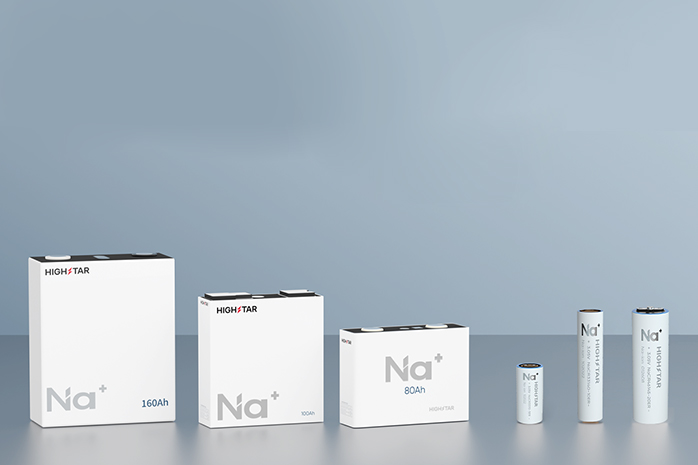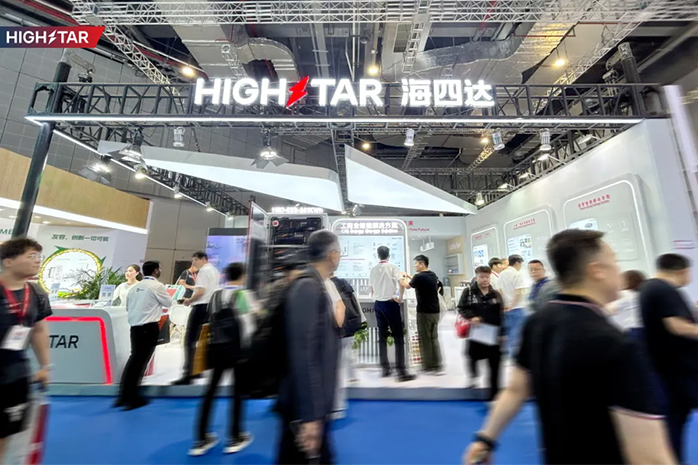Cylindrical battery cells power countless devices in our daily
lives, from power tools to electric vehicles. These energy storage solutions require precise manufacturing
processes to deliver reliable performance and safety. At Highstar, we've been perfecting cylindrical cell production since 1994,
combining traditional expertise with cutting-edge automation.
The manufacturing process transforms raw materials into finished battery cells
through multiple stages. Each step demands strict quality control and advanced equipment. Modern facilities use
automated production lines with 100% online inspection to ensure consistency across
millions of cells.
Understanding how cylindrical cells are made helps buyers, engineers, and industry
professionals make informed decisions. This guide walks through the complete manufacturing process, from material
preparation to final testing.
Electrode Material Preparation
The foundation of any battery cell lies in its electrode materials. Cathode
and anode preparation accounts for nearly 40% of the total manufacturing time. The process begins
with mixing active materials, conductive additives, and binders in precise ratios.
For the cathode, manufacturers typically use materials like:
- NCM (Nickel Cobalt Manganese) for high energy density
- LFP (Lithium Iron Phosphate) for enhanced safety
- Sodium-based compounds for cost-effective solutions
The mixing process uses planetary mixers that blend materials at specific speeds and
temperatures. Consistency is critical – even minor variations can affect cell performance. The mixture transforms
into a slurry with carefully controlled viscosity, typically between 3,000-6,000 mPa·s.
Quality control teams test samples every 30 minutes during mixing. They measure particle
distribution, viscosity, and solid content. Any deviation triggers immediate adjustments to maintain specifications.
Coating and Drying Process
The electrode coating process applies the prepared slurry onto metal foils – aluminum
for cathodes and copper for anodes. Modern coating machines can process materials at speeds up to 80
meters per minute while maintaining thickness tolerances within ±2 micrometers.
The coating process involves several key parameters:
| Parameter |
Typical Range |
Impact on Performance |
| Coating Speed |
20-80 m/min |
Production efficiency |
| Coating Weight |
150-300 g/m² |
Energy density |
| Drying Temperature |
80-120°C |
Adhesion strength |
| Web Tension |
50-200 N |
Coating uniformity |
After coating, the electrodes pass through multi-zone drying ovens. Temperature profiles
are carefully controlled to evaporate solvents without damaging the active materials. Infrared sensors continuously
monitor moisture levels, ensuring residual content stays below 500 ppm.
The dried electrodes undergo calendering – a compression process that increases density
and improves electrical contact between particles. This step can increase energy density by up to 20%.
Cell Assembly Steps
Cell assembly transforms prepared electrodes into functional batteries. The process
begins with cutting electrodes to precise dimensions using laser or die-cutting equipment. For cylindrical cells, typical formats include 18650 (18mm
diameter, 65mm height) and 21700 (21mm diameter, 70mm height).
The assembly sequence follows these steps:
- Tab welding – Attaching current collectors to electrode strips
- Separator insertion – Placing porous membranes between electrodes
- Winding – Rolling electrodes and separators into cylindrical shape
- Can insertion – Placing wound assembly into steel casing
- Electrolyte filling – Adding liquid electrolyte under vacuum
- Sealing – Crimping and welding the cell cap
Modern winding machines achieve speeds of 6-10 cells per
minute with alignment accuracy within 0.1mm. Automated vision systems inspect each wound assembly
for defects before insertion into cans.
The entire assembly process occurs in controlled environments with humidity
below 1% relative humidity. Even trace moisture can degrade cell performance and safety.
Formation and Aging
Formation activates the battery through controlled charging and discharging cycles. This
critical process creates the solid electrolyte interface (SEI) layer that determines
long-term performance. Formation typically takes 24-72 hours per batch.
The formation protocol includes:
- Initial charging at 0.05-0.1C rate
- Rest periods for stabilization
- Multiple charge-discharge cycles
- Temperature monitoring throughout
During formation, cells undergo chemical changes that establish their final capacity and
characteristics. Gas generation is normal during this phase – cells may swell slightly before gases are vented
through safety mechanisms.
"Formation is where chemistry meets engineering. The parameters we set here determine whether a cell lasts 500
cycles or 5,000 cycles." - Battery Manufacturing Industry Report, 2024
After formation, cells enter aging chambers maintained at 25-45°C. This stabilization
period, lasting 7-21 days, allows internal reactions to reach equilibrium. Voltage measurements during aging
identify cells with potential defects.
Quality Testing Procedures
Every cylindrical cell undergoes rigorous testing before shipment. Modern facilities
employ both inline and offline testing methods to ensure safety and performance standards. Testing begins during
production and continues through final inspection.
Key quality tests include:
Electrical Testing
- Capacity measurement at various discharge rates
- Internal resistance checking (typically <20mΩ for high-power cells)
- Voltage retention over 24-hour periods
- Short circuit detection
Safety Testing
- Overcharge protection verification
- Thermal stability assessment
- Mechanical abuse testing on sample basis
- X-ray inspection for internal defects
Statistical process control tracks test results across production batches. Any cell
falling outside specifications is rejected and analyzed to identify root causes. Leading manufacturers
achieve defect rates below 10 parts per million.
Automated testing equipment can evaluate up to 3,000 cells per
hour, recording data for traceability. Each cell receives a unique identifier linking it to its
complete manufacturing history.
Packaging and Final Inspection
The final manufacturing stage prepares cells for shipment while ensuring product
integrity. Cells first receive protective wrapping – typically heat-shrink PVC tubing that provides electrical
insulation and physical protection.
Packaging considerations include:
- Anti-static materials to prevent discharge
- Cushioning systems rated for 1.5-meter drop tests
- Temperature indicators for shipping monitoring
- Proper labeling per UN38.3 transportation requirements
Before packaging, cells undergo final voltage checks and visual inspection. Automated
systems sort cells by voltage levels (typically within 5mV ranges) to facilitate battery pack assembly at customer
sites.
Modern packaging lines integrate several technologies. Robotic systems place cells in
trays with precision positioning. Vision systems verify correct orientation and detect any physical damage. Each
package includes documentation with test certificates and handling instructions.
The complete manufacturing process, from raw materials to packaged cells, typically
spans 15-30 days. However, actual production time represents only a fraction of this duration
– most time is spent in formation and aging to ensure optimal performance.
Conclusion
Cylindrical cell manufacturing combines precision engineering with advanced chemistry.
Each step in the process directly impacts the final product's safety, performance, and longevity. As battery
technology evolves, manufacturing processes continue to improve through automation, quality control innovations, and
new material developments.
For companies seeking reliable battery solutions, understanding these manufacturing
processes helps in selecting the right supplier and technology. Whether you need cells for power tools, energy storage systems, or emerging
applications, the manufacturing quality directly determines your product's success.
The future of cylindrical cell manufacturing points toward higher automation, improved
energy density, and sustainable production methods. As demand grows across industries, manufacturers who master
these complex processes will lead the transition to electrified technologies.

 Buy
Buy




